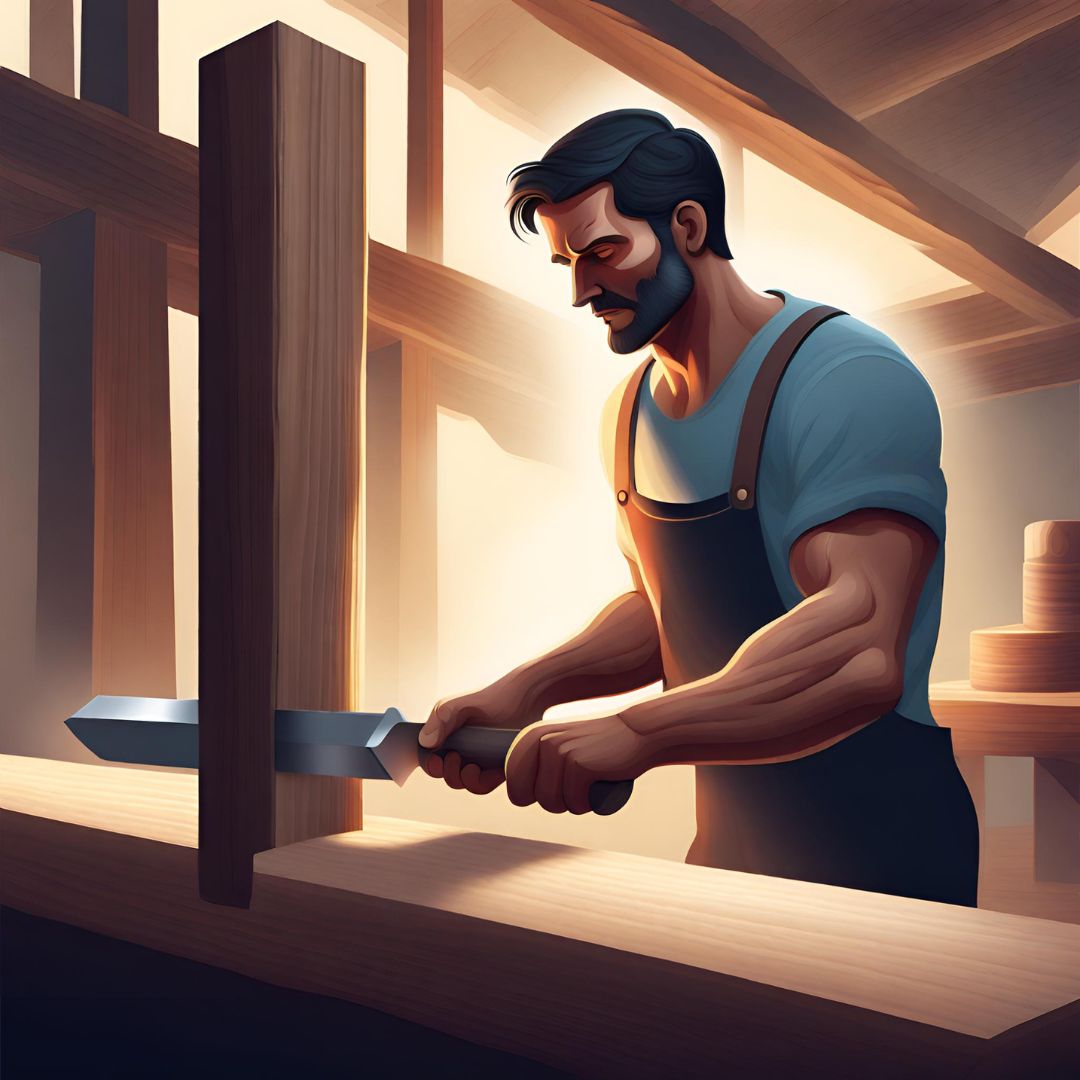We may receive a commission when you use our affiliate links. However, this does not impact our recommendations.

Is that supposed to be a chisel?
Advancements in computer technology have finally resulted in all-knowing AI programs. Thanks to this brave new world, we’re finally able to ask the hard-hitting questions woodworking philosophers have never been able to answer. This week we’re asking “Could I work faster if I used a really, really big chisel?”
Imagine this: you’re standing in your workshop, armed with a chisel the size of a snow shovel. With this massive tool, you envision carving through wood like a lumberjack on steroids. You swing it with all your might, the chisel gouging into the wood with a satisfying crunch.
But wait, what’s that? The chisel seems to be getting stuck. You try to pry it loose, but it’s like it’s been glued in place. Suddenly, the chisel snaps in half, sending a shower of wood and metal flying everywhere. Your project is instantly ruined.
You stare at the broken chisel in disbelief. Your grand plan of woodworking domination has just gone up in smoke. Like Icarus you’ve flown too close to the sun and now you’re paying the consequences.
So, what’s the moral of this story? Stick to the tried-and-true tools of the trade. There’s a reason why woodworkers have been using chisels and saws for centuries. They’re the right size for the job, and they’ll help you avoid some serious woodworking fails.
Hmm, seems like AI has a tenuous-at-best grasp as to how a chisel is actually used. Maybe we’ll have better luck with future inquiries. What questions should we seek the answers to next?
Here are some supplies and tools we find essential in our everyday work around the shop. We may receive a commission from sales referred by our links; however, we have carefully selected these products for their usefulness and quality.








